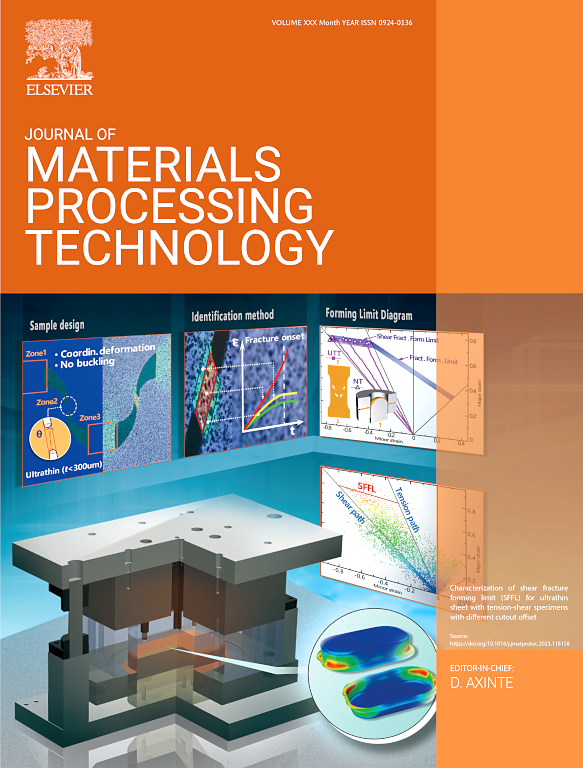A novel strengthening method using Al3Ti for oscillation laser-MIG hybrid welded joints of Al-Zn-Mg-Cu alloy
IF 6.7
2区 材料科学
Q1 ENGINEERING, INDUSTRIAL
Journal of Materials Processing Technology
Pub Date : 2025-02-01
DOI:10.1016/j.jmatprotec.2024.118695
引用次数: 0
Abstract
Al-Zn-Mg-Cu alloys are extensively utilized in lightweight structural applications, with Al-Mg wires commonly employed to mitigate solidification cracking during fusion welding. However, the suboptimal properties of welded joints have remained a persistent challenge, particularly when paired with low-strength wires. Currently, the strength of fusion welded joints in Al-Zn-Mg-Cu alloys typically achieves about 60% of the base material (BM). This study employed an oscillation laser-MIG hybrid welding technique incorporating a titanium interlayer, and the influence of Al3Ti on microstructural features and mechanical properties was analyzed. Results demonstrated that the mechanical performance of welded joints was significantly enhanced by the presence of Al3Ti. Numerical simulations indicated that oscillation laser-induced stirring improved melt fluidity in the molten pool, leading to the formation and uniform distribution of Al3Ti throughout the weld. Al3Ti particles as nucleation substrates, facilitating grain refinement. A strengthening mechanism for Al3Ti applicable to fusion welded joints in Al-Zn-Mg-Cu alloys was proposed, incorporating grain boundary strengthening and particle strengthening. The tensile strength and elongation of the welded joints increased to 401.74 MPa (71% of BM) and 7.27%, respectively. This work demonstrated an innovative processing and an unconventional reinforcement phase which provided guidance for fusion welding of high-strength aluminum alloys in practical applications.
求助全文
约1分钟内获得全文
求助全文
来源期刊

Journal of Materials Processing Technology
工程技术-材料科学:综合
CiteScore
12.60
自引率
4.80%
发文量
403
审稿时长
29 days
期刊介绍:
The Journal of Materials Processing Technology covers the processing techniques used in manufacturing components from metals and other materials. The journal aims to publish full research papers of original, significant and rigorous work and so to contribute to increased production efficiency and improved component performance.
Areas of interest to the journal include:
• Casting, forming and machining
• Additive processing and joining technologies
• The evolution of material properties under the specific conditions met in manufacturing processes
• Surface engineering when it relates specifically to a manufacturing process
• Design and behavior of equipment and tools.
 求助内容:
求助内容: 应助结果提醒方式:
应助结果提醒方式:


